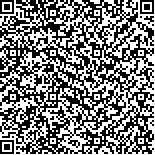| Quote
: |
钟峰,曹越,罗容,盛蓉蓉,石文英,刘英含,章薇.电针大肠合募俞配穴治疗腹泻型肠易激综合征疗效观察[J].湖南中医药大学学报英文版,2018,38(4):435-438.[Click to copy
] |
|
| |
|
|
| This paper
:Browser 2213times Download 580times |
| 电针大肠合募俞配穴治疗腹泻型肠易激综合征疗效观察 |
| 钟峰,曹越,罗容,盛蓉蓉,石文英,刘英含,章薇 |
| (湖南中医药大学第一附属医院, 湖南 长沙 410007) |
| 摘要: |
| 目的 观察电针刺激大肠合募俞配穴(天枢、大肠俞、曲池、上巨虚)对腹泻型肠易激综合征的临床疗效。方法 招募60例腹泻型肠易激综合征患者,随机分为2组(电针组、药物组),每组30例。电针组采用左右侧天枢、大肠俞、曲池、上巨虚穴交替电针;药物组口服盐酸洛哌丁胺胶囊。各组于治疗前、治疗2周、治疗4周、治疗结束后4周随访时,分别记录周排便次数、大便性状评分及周正常排便天数,同时在治疗前、治疗2周、治疗4周时记录焦虑自评量表(self-rating anxiety scale,SAS)和抑郁自评量表(self-rating depression scale,SDS)评分。结果 治疗前两组患者周排便次数、大便性状评分、周正常排便天数比较,差异均无统计学意义(P>0.05);两组患者治疗后周排便次数、大便性状评分、周正常排便天数与治疗前比较,差异具有统计学意义(P<0.05),但两组间比较差异无统计学意义(P>0.05)。两组患者治疗结束后4周随访时,周排便次数、大便性状评分、周正常排便天数与治疗前比较,差异具有统计学意义(P<0.05),但与治疗4周时比较,差异无统计学意义(P>0.05)。两组患者治疗前后的精神心理状态比较(SAS、SDS评分)比较,差异具有统计学意义(P<0.05);两组间比较,差异无统计学意义(P>0.05)。结论 电针大肠合募俞配穴(天枢、大肠俞、曲池、上巨虚)治疗腹泻型肠易激综合征具有良好的临床疗效,其疗效与口服盐酸洛哌丁胺胶囊治疗效果相当,且其效应具有一定的持续性,可作为临床治疗方案广泛应用。 |
| 关键词: 腹泻型肠易激综合征 天枢 大肠俞 曲池穴 上巨虚穴 电针 |
| DOI:10.3969/j.issn.1674-070X.2018.04.018 |
| Received:January 22, 2018 |
| 基金项目:国家重点基础研究发展计划项目(2011CB505202);国家自然科学基金青年基金(81503661);湖南省教育厅优秀青年项目(17B202)。 |
|
| Clinical Effect of Electroacupuncture at He-Mu Acupoint Combination in Treatment of Diarrhea-Predominant Irritable Bowel Syndrome |
| ZHONG Feng,CAO Yue,LUO Rong,SHENG Rongrong,SHI Wenying,LIU Yinghan,ZHANG Wei |
| (The First Affiliated Hospital of Hunan University of Chinese Medicine, Changsha, Hunan 410007, China) |
| Abstract: |
| Objective To investigate the clinical effect of electroacupuncture at He-Mu acupoint combination (Tianshu ST25, Dachangshu BL25, Quchi LI11 and Shangjuxu ST37) in treatment of diarrhea-predominant irritable bowel syndrome. Methods A total of 60 patients with diarrhea-predominant irritable bowel syndrome were randomly divided into electroacupuncture group and medication group, with 30 patients in each group. The patients in the electroacupuncture group were given electroacupuncture at Tianshu (ST25), Dachangshu (BL25), Quchi (LI11) and Shangjuxu (ST37) on both sides, and those in the medication group were given oral loperamide hydrochloride capsules. The number of times of defecation each week, stool property score, and the number of days with normal defecation each week were recorded before treatment, at treatment for 2 and 4 weeks, at 4 weeks after treatment. The Self-Rating Depression Scale (SAS) and Self-Rating Depression Scale (SDS) were evaluated before treatment, at treatment for 2 and 4 weeks. Results There were no significant differences in the times of weekly defecation, stool property score, and days of weeky normal defecation between the two groups before treatment(P>0.05). After treatment, the times of weekly defecation, stool property score, and days of weeky normal defecation in the two groups were statistically different (P<0.05), but there were no significant differences between the two groups (P>0.05). At 4 weeks after treatment, both groups had significant changes in the the times of weekly defecation, stool property score, and days of weeky normal defecation (P<0.05), but there were no significant changes in these indices at treatment for 4 weeks (P>0.05). After treatment, the changes in SAS and SDS scores in the two groups were obviously significant (P<0.05), and there were no significant differences between the two groups (P>0.05). Conclusion Electroacupuncture at He-Mu acupoint combination Tianshu (ST25), Dachangshu (BL25), Quchi (LI11) and Shangjuxu (ST37) has a good clinical effect in the treatment of diarrhea-predominant irritable bowel syndrome, which is comparable to the clinical effect of routine medication, and such effect can last for a certain period of time. Therefore, it holds promise for clinical application as a therapeutic regimen. |
| Key words: diarrhea-predominant irritable bowel syndrome Tianshu (ST25) Dachangshu (BL25) Quchi (LI11) Shangjuxu (ST37) electroacupuncture |
|

二维码(扫一下试试看!) |
|
|
|
|


